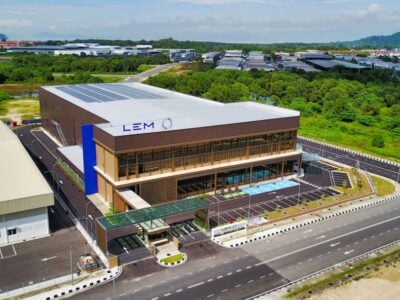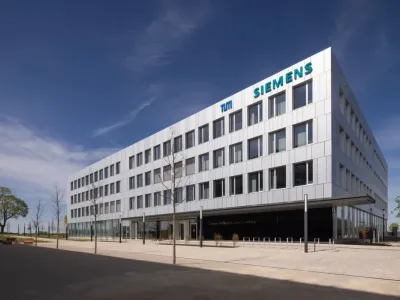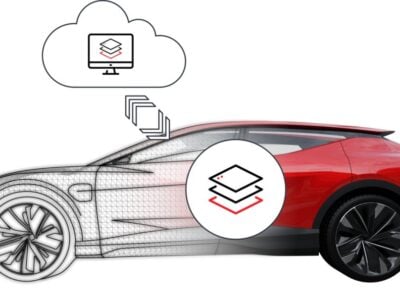
Analysts lauded Intel’s dominance in cloud computing which remains its strong foot. But they expressed skepticism its bets in memory and the Internet of Things will pay off as smartly as the company hopes.
“Forty percent of our revenues and 60% of our margins come from outside the PC – now it’s time to push the company over all the way to that strategic direction,” said chief executive Brian Krzanich in a conference call laying out plans to cut 12,000 employees at a cost of $1.2 billion.
The reorg tops 10,500 people his former boss, Paul Otellini, laid off in 2006 at the dawn of the mobile boom when the PC decline began in earnest. Microsoft, the company’s Wintel partner in the PC boom, paid $1.6 billion to cut 18,000 people when its new CEO took charge last year.
The layoffs pale to the more than 50,000 their top customer, Hewlett-Packard, has laid off in recent years as it split and split again.
More recently the pain has spread throughout the maturing semiconductor industry, triggering a massive consolidation of giants such as Broadcom and Avago as well as 15% layoffs at Qualcomm amid slowing smartphone growth.
Intel will maintain its plan to spend $9.5 billion on capital equipment this year, mainly for 10nm processors and 3D NAND flash. Meanwhile new division president Venkata “Murthy” Renduchintala is evaluating which Intel products will get the axe.
After a worse than expected first quarter, Intel predicted its second quarter will see revenue fall slightly to $13.5 billion. It drew down forecasts of 2016 revenue slightly to mid-single digit growth and raised its predictions for PC declines to high single digits.
“This may mark the beginning of the end for the PC era — it was a good run,” said Nathan Brookwood, principal of market watcher Insight64 (Saratoga, Calif.). “Intel was a second-tier chip maker in the 1980s when the PC came along and here we are with the PC beyond middle age,” he said.
“Certainly the party is over for the PC, the market is still there but it’s not much fun anymore,” added Linley Gwennap, principal of The Linley Group (Mountain View, Calif.).
Wall Street praised Intel’s move noting its stock is likely to take a short term hit.
“We applaud Intel for finally taking decisive actions to address its cost structure with an announcement of significant restructuring,” Ross Seymore, analyst with Deutsche Bank wrote in a report that maintained a buy on Intel. “Looking forward, we expect a leaner Intel with great focus on growth businesses,” he added.


Most of Intel’s 9.5 billion cap ex will come toward the end of this year, focused on gear for “first production capability [of 10nm chips]” and to ramp 3D NAND flash memory in Intel’s Dalian, China fab, said Stacey Smith, Intel’s CFO who will take on management of the company’s sales, manufacturing and operations after finding a replacement.
“Those two items –10nm and Dalian — neither are impacted by the restructuring, so we haven’t let our foot off the gas one bit,” Smith told Wall Street analysts on a quarterly conference call.
“This doesn’t have any effect on our [already slowed] technology cadence,” said Krzanich. “We are always striving to get back to two years [between nodes] but the timing for 10nm is more like two-and-a-half years — we have not talked about 7nm in part because its more in definition,” Krzanich said, noting as much as three years passed between some prior nodes.
“Over time we are looking at Moore’s law leadership over the competition as most important because as these nodes get harder, they get harder for everybody so you want leadership over the competition,” he said.
The company has not yet decided where it will make product cuts. “Murthy is doing a complete review of all of our products and will report back to me in the near future and give me a proposal,” Krzanich said.
Intel aims to focus on the fastest growing PC products. They will include tablet/notebook hybrids, thin-and-light notebooks, set-top boxes and high-end gaming systems “We have very innovative systems in design now…coming later this year, but we will try to be more efficient and not work across all PC form factors and markets,” he said,
Making cuts may not be so easy, said Gwennap.
“They are kind of stuck, they can’t get out of even parts of the PC market because they are the main [processor] supplier,” he said. “I guess they won’t do much new for segments that aren’t growing, so people may get stuck with older processors that get upgraded less often,” Gwennap added.
Intel saw its tablet volumes fall 44% in the first quarter, presumably after it stopped offering steep discounts to win market share. Other cuts in the mobile group are expected.
“They said they were going to sell 40 million tablet processors, so they subsidized products to grease that number — they were literally giving these things away,” said Gwennap. “They still don’t have any marquee wins in smartphones and the tablet business is falling apart — that’s one area they could get out of,” he added.
Each of Intel’s growth markets has its challenges. Memories have big up and down cycles, IoT pinches pennies and the data center increasingly represents a complex mix of inter-dependent products.
Memory was the one segment that made a loss in Intel’s latest quarter, thanks to costs of ramping new 3D NAND and 3D Xpoint products, and especially to falling prices. “We are seeing aggressive pricing in this space,” said Krzanich.
But today’s over-capacity in flash and aggressive pricing typically “shifts to normal and then tight pricing [and] we think we’ve done a good job of structuring the business for these cycles,” he said, adding the new high-end memories will become strategic parts of its systems offering to data centers.
“Cyclically it’s a tough time but we are investing for a strong position going forward,” said Smith hoping with Krzanich for firmer pricing when Intel is shipping 3D NAND and 3D Xpoint products.
Market and financial analysts doubt Intel will see much growth or profit in its IoT group. Krzanich remains bullish about the area he was quick to champion since taking over as CEO, noting he will focus on the most lucrative automotive, industrial and retail segments where users want machine learning and connectivity.
“Over the long term this area will be mid-teens growth with, for the most part, PC-like margins and we will try to play to segments that play to our strengths,” he said.
Both Brookwood sand Gwennap expressed skepticism.
“Most of the IoT volume will come from really cheap processors that Intel is not really good at making,” said Gwennap. “Intel will make money on IoT by making more servers for the cloud not smart lightbulbs,” he said.
Indeed, all sides are bullish on Intel’s data center group which is “going gangbusters,” said Brookwood. “They are more in position to do a top-to-bottom rack architecture than anyone, and they have a more unified approach than IBM,” he said.
Intel forecasts average selling prices in its data center group will rise through the year. Krzanich admits the portfolio is a mix from Xeon Phi processors that sell for thousands of dollars to network chips that sell for tens of dollars.
But “in each family ASPs are increasing…people are buying up the stack as we offer more performance for a better price,” Krzanich said.
Asked about heated competition from ARM’s many partners, IBM and Google offering or exploring alternative architectures, Krzanich pointed to his PC era mentor. “Having been raised by Andy Grove, I’m always paranoid about the competition,” he said.
This year Intel will finally start shipping silicon photonics. It is already sampling chips that put an Altera FPGA and Xeon processor in one package, and has an array of networking chips from earlier acquisitions. 3D Xpoint memories will ramp late this year. All are pieces of an emerging system of systems offering for data centers
“That’s key to keeping our position, to understand the whole rack from top to bottom,” said Krzanich.
About the author:
Rick Merritt is Silicon Valley Bureau Chief at EE Times
 If you enjoyed this article, you will like the following ones: don't miss them by subscribing to :
eeNews on Google News
If you enjoyed this article, you will like the following ones: don't miss them by subscribing to :
eeNews on Google News



